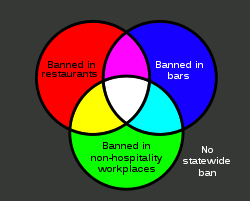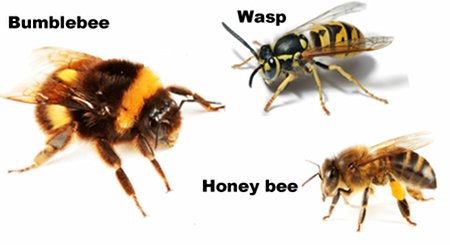Gerry Adams calls on Irish Government to reopen the ‘Hooded Men’ case
A documentary alleges British lied over interrogation methods used in 1971
Sinn Féin president Gerry Adams has called for the reopening of the 1970s case alleging torture by the British government against the so-called Hooded Men.
The call follows the screening last night of The Torture Files, an RTÉ investigation into the events.
“In August 1971, 340 men were arrested and interned. Fourteen of these were subject to in depth interrogation techniques which had been planned from earlier in the year and involved specially trained British interrogators andRUC Special Branch officers,” Mr Adams said today.
“Over a number of days the Hooded Men were subject to white noise, sleep deprivation, hooding, being forced to stand spreadeagled against a wall and were deprived of food and water. They were also beaten and terrorised.”
In 1977 the European Commission on Human Rights concluded that this treatment was torture.
“The following year the European Court of Human Rights ruled that it wasn’t torture but inhuman and degrading treatment,” Mr Adams said.
He said that following intensive research by the Pat Finucane Centre and further research by the RTÉ team, new evidence had emerged which reveals that the British government “lied to the European Court of Human Rights both on the severity of the methods used on the men, their long term physical and psychological consequences, on where these interrogations took place and who gave the political authority and clearance for it to occur”.
“Not only was the European Court misled and lied to by the British government but so too was the Irish government.”
Mr Adams said the onus was now on the Irish Government to challenge the British government on these matters and to request that the European Court of Human Rights reopen the case of Ireland v the United Kingdom.
He said he was disappointed that Attorney General Maire Whelan had refused to reopen the case following representation from lawyers acting for the Hooded Men.
Amnesty International said the allegations in the documentary that the British government had sanctioned the use of torture in Northern Ireland in the 1970s underlined “the failure to deliver a comprehensive mechanism to deal with the past”.
Northern Ireland programme director for Amnesty International, Patrick Corrigan, said the latest allegations that the British government had misled the European Court of Human Rights were “deeply worrying”.
Amnesty’s executive director, Colm O’Gorman, said the organisation’s own research on torture in detention in Northern Ireland in the 1970s was an important factor in these cases being brought before the European Court in the first place, and that it would continue to follow developments closely.
“Torture is a crime under international law, and anyone at any level who condoned or authorised it must be held fully accountable.”
Pubs and shops caught breaking anti-smoking laws named for first time


The HSE has for the first time named and shamed pubs and shops which have breached anti-smoking legislation.
And it revealed that more than half of prosecutions in recent years relate to smoking areas in licensed premises which don’t comply with Ireland’s strict workplace smoking ban.
Some 10 businesses and one individual were prosecuted for tobacco-related offences such as smoking in pubs or selling cigarettes to minors in the first three months of this year.
Co Donegal topped the charts for offences, accounting for two thirds of all 11 convictions for tobacco-related offences nationwide.
Some eight offences related to smoking in the workplace, particularly in pubs and non-compliant smoking shelters, while three retailers were prosecuted for selling tobacco products to children under 18 years.
A total of 251 prosecutions were taken between 2004 and the end of 2013 resulting in 263 convictions, said HSE environmental health tobacco lead Dave Molloy.
“These prosecutions were mainly in respect of licensed premises including pubs, night-clubs and hotels. In recent years, more than 50pc of prosecutions have related to smoking areas in licensed premises,” he said.
“In general, compliance with the tobacco health legislation had been high.
Breaches: “However, today’s publication highlights that significant problems still remain in relation to smoking in the work place, particularly in relation to licenced premises and non-compliant smoking shelters, and also in relation to sales of tobacco products to minors,” he said.
The HSE was publishing details of breaches on the recommendation of its Tobacco Control Framework implementation group.
“The vast majority of retailers and licenced premises are compliant and we want to show them that we do take action against those businesses which break the law,” added Mr Molloy.
It also wanted to encourage the public and businesses to report breaches of tobacco legislation to its compliance line on 1890 333 100.
Asked if Donegal was a particular black spot for tobacco offences given seven of the 11 offences recorded occured there, Mr Molloy said that would not generally be the case.
Over the past 10 years, breaches were spread out across the country and the HSE was working to ensure a consistent approach to enforcement by environmental health officers, he said.
Most of the businesses convicted were also removed from the Office of Tobacco Control’s register of tobacco retailers for periods of between one day and two months.
The name of three individuals or sole traders convicted in recent months has been withheld for data protection reasons, but Mr Molloy said new regulations were being proposed which would allow such offenders be named in future.
GOOD NEWS:
Hewlett Packard to create 100 jobs at Galway research centre
Computer maker Hewlett Packard has confirmed that it will add about 100 new jobs at the company’s new research and development centre in Galway.
Company makes announcement during visit of Taoiseach to its global head office in Palo Alto
Computer maker Hewlett Packard has confirmed that it will add about 100 new jobs at the company’s new research and development centre in Galway.
The company made the announcement during the visit of Taoiseach Enda Kenny to its global head office in Palo Alto,California on his three-day investment mission to San Francisco and Silicon Valley.
The high-tech jobs will be created at a new cloud products and services research facility at Ballybrit which is being built and will be finished next year.
“Today’s announcement that HP is creating 100 additional jobs in Galway is a boost forIreland and for the ICT [information and communication technologies] sector in particular,” said Mr Kenny during his visit.
“HP has consistently invested in and believed in Ireland over the past 40 years. Today, the company is one of Ireland’s most valued investors and one of our foremost creators of highly skilled R&D jobs.”
Martin Murphy, chief executive of HP Ireland, publicly flagged at the start of this year that the company would be adding up to 150 research engineer jobs to the 650 already employed when the Galway facility is completed.
“HP has been one of the largest and most significant investors in Ireland Inc for the past 40 years,” said Barry O’Leary, chief executive of IDA Ireland. “Today’s announcement is another vote of confidence in Ireland’s ability to both provide and attract a strong technical workforce.”
HP Ireland employs about 4,500 people with facilities inLeixlip, Dublin, Galway and Belfast.
The company has recently invested in its software engineering facility in Belfast and a research and development facility in Leixlip, Co Kildare.
“Barney the dog with a nose for money” wins Golden Paw hero dog award


Barney is based in Dublin Airport but he is regularly involved in specific projects across the country.
The Irish revenue’s cash sniffing Barney has been named the winner of the Law Enforcement Category in the Irish Kennel Club’s Golden Paw Hero Dog Awards.
Since joining Revenue’s 15-strong canine team 3 years ago, the 4 year old springer spaniel has developed his skills to a very high standard.
His work has resulted in significant detections.
In one particular search of a dwelling, he found €30,000 and two silver bars valued at €10,000 concealed within a wardrobe.
In another instance Barney gave an indication that led to a seizure of €60,000.
The Revenue say that “His sharp scenting skills have enabled him to indicate on passenger luggage, clothing and even within passenger’s footwear”.
Barney is based in Dublin Airport but he is regularly involved in specific projects across the country.
The Team: Revenue’s Canine Team is a vital resource in the detection of the illegal movement of currency, tobacco and in the area of drug detection/enforcement.
Over the years the team has made a huge contribution to Revenue, assisting in the detection of significant quantities of drugs, cigarettes and cash.
Their detections have led to many successful convictions and disrupted criminal activity.
Barney participates in national Revenue operations and supports other law enforcement agencies when requested, often in very challenging environments.
Barney’s ‘professional’ life will typically last five to seven years.
Record sightings for invasive tree bumblebee in Britain


The tree bumblebees first arrived in Britain in 2001, but they have spread rapidly
Sightings of an invasive bee species in Britain have reached a record high, the Bumblebee Conservation Trust says.
Tree bumblebees first arrived from continental Europe about 13 years ago, but they have now been seen throughout England, Wales and southern Scotland.
Scientists say it is not yet clear whether their spread is a bonus for the UK’s native bumblebees or whether they pose a threat.
It is not clear how the bees found their way to the UK.
It is thought they may have blown across the English Channel or they could have arrived in soil in imported plants.
Bird-box nests: The tree bumblebee (Bombus hypnorum), which is fuzzy, with a ginger head, black body and white tail, is easy to spot. And unusually for a bee, it nests in tree hollows or bird boxes.
It was first spotted in the New Forest in 2001, but it is spreading at a rate of about 12,000 sq km (4,500 sq miles) each year.
Stuart Roberts, who is chair of the Bees, Wasps and Ants Recording Society (BWARS), which works with the Bumblebee Conservation Trust, said the organisation had received a record number of sightings in 2013 and 2014.
“The colonisation and spread of this beautiful bee has been extremely rapid,” he said.
The bees have now been found about 20 miles to the north of Glasgow in Scotland, he added.
New research also suggests that the tree bumblebee may be particularly hardy.
A study published in the Journal of Animal Ecology found that the insects are resistant to some nematode worm parasites that can kill off native bumblebees.
The jury is still out, however, as to the wider impact of the bee’s arrival.
Prof Mark Brown, a biologist from Royal Holloway, University of London, said: “It could be that these bees are providing additional pollination services – pollinating garden plants, plants in the countryside, or crops.
“It could also be that it is simply filling an empty niche in our ecosystem. In Continental Europe, it lives side-by-side with a lot of the species we have in the UK.
“Alternatively, it may be competing with them for resources – for flowers or nest sites.”
This is a peak time of year to spot tree bumblebees: the males can bee seen dancing outside the entrances of nests to attract the attention of the new queens.
Stuart Roberts said that if a nest was found, it should be left alone.
He said: “In the first instance, relax – the nests will be vacated within the next couple of weeks and you are lucky that these first-class pollinators have chosen you!
“Anyone who spots a nest of this delightful bumblebee should report it to BWARS online (with a photo for verification) to help us build up a real-time picture of the expansion of the species across the country.”




No comments:
Post a Comment